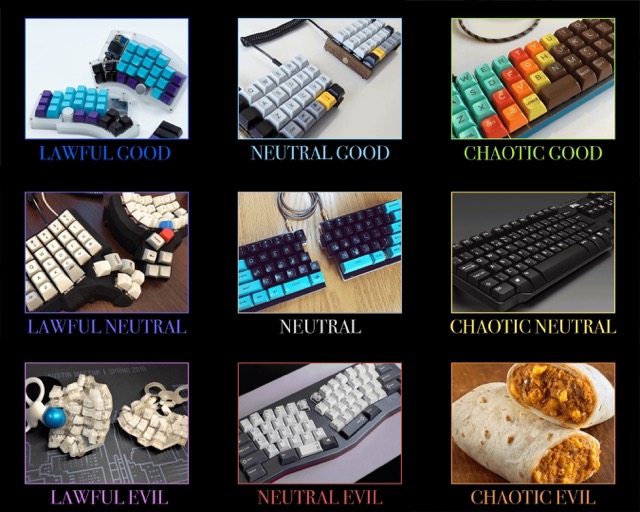Here’s what billion-dollar businesses have in common: they weren’t built after their founders perfected their “endgame” keyboard.
Back in May and June 2025 – about four months before writing this post – I got sucked into the vortex that is custom keyboards. If you’re not aware, there’s a whole cottage industry built around people who not only buy or customize keyboards but also design and build them from scratch. Long story short, I ended up in the latter camp, soldering and programming keyboards from individual electronic components.
This hobby was amazing at first, but it also turned out to be an expensive life lesson.
Magic Keyboard: The Gateway Drug to Mechanical Keyboards
In my opinion, the Apple Magic Keyboard is ergonomically abysmal. But coming from the Logitech Ergo K860 – a fixed, split keyboard with super comfortable (but mushy) keys – it felt like an upgrade. At first.
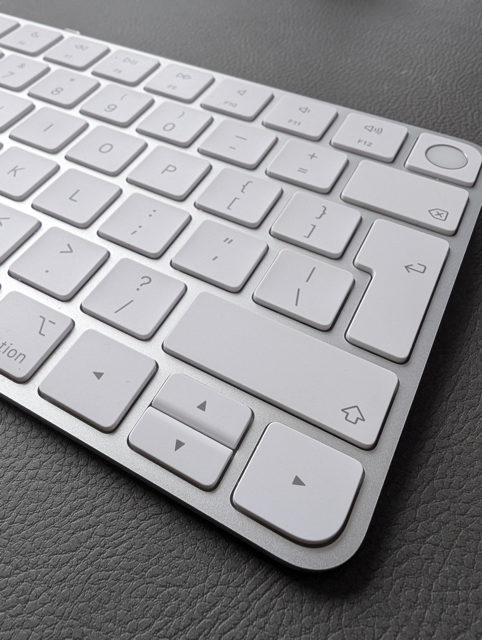
When the Magic Keyboard arrived, I was already disappointed. While sturdy, it felt cheap and flimsy. The Apple scissor switches felt good, but typing on them produced a horrible, rattly sound – worse than the cheapest Kailh Choc V1 switches. It honestly looked and felt cheap.
At first, I gave it a pass. After the mushy Logitech keys, the mechanical feedback felt refreshing. That is, until a few weeks later, when I suddenly developed finger joint pain.
I’m no spring chicken, and one might expect career-related injuries at this point. But after researching the issue, I discovered I wasn’t alone. It turns out that low-profile mechanical switches on a rigid aluminum keyboard cause your fingers to constantly bottom out, putting pressure on your joints. So much for Apple, a multi-billion-dollar company, making a healthy keyboard.
Cure for a Bad Keyboard? More Keyboards!
Going back to Logitech was out of the question. The mushiness felt unbearable. So, I dove deeper into research – and found what would eventually become my downfall: the world of custom, split mechanical keyboards. The idea was thrilling. I could build my own keyboard, solder it, program it – the whole nine yards.
The challenge? The price.
Sure, pre-built keyboards in this niche are expensive. Models like the Dygma Defy, ZSA Voyager, or Unicorne can easily cost over €300. Even DIY kits aren’t cheap. I turned to AliExpress, where I found reasonably priced clones and plenty of weird products. As a first-time buyer on the platform, I was pleasantly surprised by the quality of the listings, complete with detailed descriptions and plenty of photos. Some German online stores could take notes.
I placed my order and the waiting began.
While waiting for the kits, controllers, switches, and keycaps to arrive, I grew impatient. I wanted a new, high-quality input device – now. Around that time, Keychron released Version 3 of their iconic K2 model, and it had ISO layout (something I really appreciate Keychron for).
Internet Hype Meets Reality
The K2 is a decent keyboard, but it was a major disappointment. For me, at least, mechanical keyboards didn’t live up to the online hype – especially the YouTube reviews, many of which were clearly paid promotions. I had expected to become a touch-typing rockstar overnight, coding at 10x speed and doing my taxes in my sleep. Instead, it was just another random keyboard. The disappointment was real.
I didn’t give up. Surely, the issue was that it wasn’t ergonomic enough. It must be more ortholinear. More split. No problem. A bunch of packages from China arrived, and I could finally start building my Lily58 split keyboard.
Split Brain
It took just one evening to solder and flash the Lily58 with the latest QMK firmware. Finally, I had my dream keyboard, complete with silent, creamy Outemu switches. It felt great. There’s something special about using a keyboard you’ve built yourself.
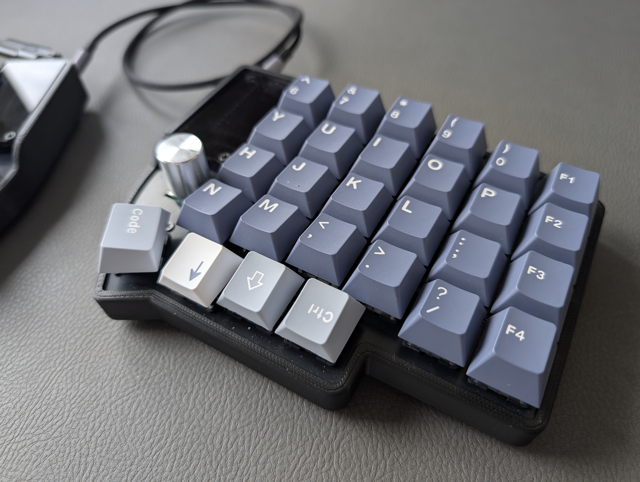
But there was a problem: my typing was terrible.
Still, I loved the keyboard and was determined to make it work. My keyboard phase was in full swing. I ordered different MX switches, keycaps, and tenting solutions. I spent hours on KeyBR and Monkey Type, improving my typing skills. During this transition, I still used the K2 for client work – switching to the Lily58 full-time would have hurt my productivity way too much. But every spare moment was dedicated to mastering my new input device.
Eventually, I got pretty good. So good, in fact, that I decided 58 keys were too many. It was time to go smaller. While I would have loved to build another keyboard from scratch, I opted for a no-frills, pre-built 3w6 keyboard from Keebart. This lovely, ultra-portable keyboard has only 36 keys and forced me to rethink my workflow yet again.
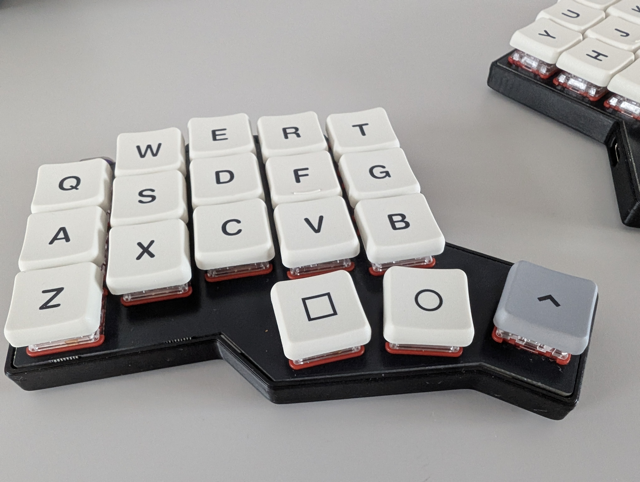
The Lily58 with Epomaker Zebra switches was a joy to use, but the 3w6 came with Choc V1 Brown switches – rattly, stiff, and reminiscent of why I hated the Apple Magic Keyboard. After more online research, I ordered Choc Sunset switches, which Reddit raved about. They were smoother and better-sounding, but still too stiff for my pinky, which started to ache after just a few minutes of intensive typing.
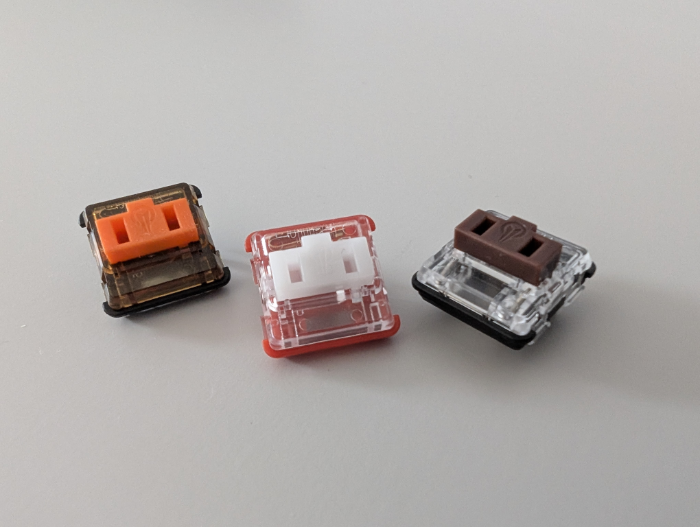
Off I went to order Choc Pro Reds. Contrary to popular opinion, I think Pro Reds are the best Choc V1 switches. Yet, after weeks with the 3w6 (which required home row mods to be usable), I hit a speed threshold. The keyboard was comfortable, but I couldn’t tweak the configuration enough to avoid accidental misfires. Turns out, there is such a thing as a keyboard with too few keys.
The So-Called Endgame
I went back to the Lily58. With Cherry-profile keycaps, Akko Creamy Black Pro switches, and rubber o-rings for dampening, I finally created my perfect keyboard.
It’s not too loud – just a pleasant thump. It’s buttery smooth but not mushy. It has enough keys to support all the features I need without home row mods.
Perfect.
The Price of the Hobby
Here’s what billion-dollar businesses have in common: they weren’t built after their founders perfected their “endgame” keyboard. They were built instead of wasting time obsessing over keyboard thockiness (thock? thocc? whatever).
And that’s what I meant at the beginning of this post. What started as a reaction to inconvenience became a huge time and money sink. On top of that, I’m still not 100% back to my previous typing speed (some sources say it takes around six months to fully adapt).
Rather than building more, I spent more money and time. I fell into the classic trap of consumption over creation, becoming a victim of social media hype and YouTube “reviews.” I indulged in things I didn’t really need.

Not all was bad, though. The ordeal forced me to focus on touch typing – a valuable skill worth developing to keep the mind sharp. I’d encourage everyone to find something that rewires their brain from time to time. Your brain, like your muscles, needs stimulation to stay healthy. But please, for the love of whatever deity you believe in, stay away from the toxicity of Monkey Type and similar tools. Trust me, typing at 100 WPM while repeating words on a screen doesn’t translate to real-world speed. All it does is reinforce frustration when you struggle with everyday tasks.
Finally
There’s something to be said about work as a craft, and a craftsman pays attention to their tools. As a software engineer, I thought my keyboard – my primary input tool – was extremely important. It is significant, but it’s just a tool. Unless you’re in the business of selling keyboards, it’s a means to an end.
Spending my most valuable resource – time – obsessing over keyboards might have been the dumbest thing I’ve done in the last decade. And given my track record, that’s saying something.
Find yourself a healthy keyboard. Do it quickly. Don’t sink too much time into it. Block YouTube (for the most part). Make your workspace healthy. Focus on creating, not consuming. That’s what I’ll be doing from now on.
